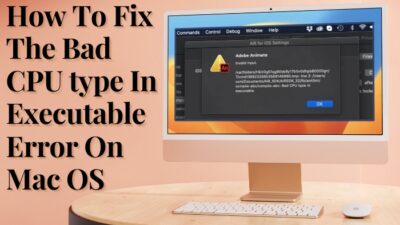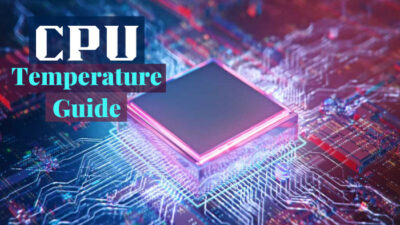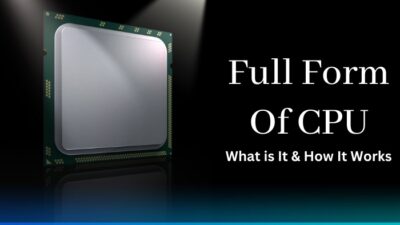Imagine you are ready to fire up your new PC for the first time, but as you hit the power button, nothing happens.
There’s no welcome screen, not even the BIOS. The only thing you’re seeing is a black screen. You’re probably frustrated and wondering who the culprit is, and how it happened.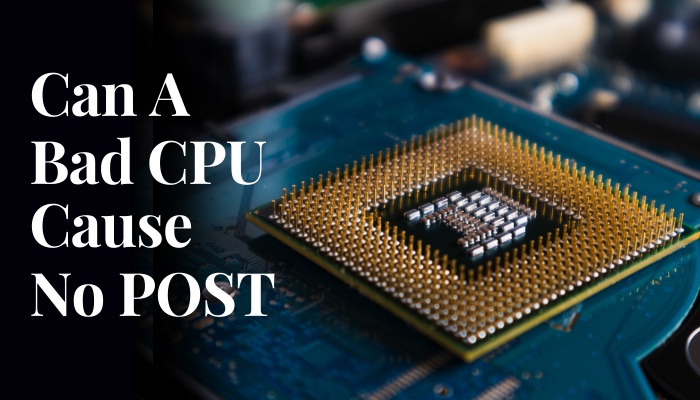
Well, don’t worry. The solution to your problem may lie in the CPU checking process, called POST. And this article will help you with information and the ways to resolve it.
So, let’s begin.
What is POST and How is it Work?
The POST or Power-On-Self-Test is an operation inducted by the computer to check the component’s condition during the PC start-up and before booting up to the operating system. It’s a basic process that verifies the viability of the parts to run the PC properly.
POST is a series of tests by the BIOS (Basic Input/ Output System) to ensure the functionality of all necessary components. It examines the RAM, processor, graphics card, hard disk, base and system memory, and everything connected to the motherboard.
If the POST process completes successfully, it goes to the operating system and boots up the computer.
However, if the POST process fails to complete and finds any problem, it stops the PC from turning on to prevent issues.
Various components are responsible for the no POST process. The following passage will describe if the processor is accountable for the no POST condition.
Can a Bad CPU Cause No POST?
Yes, a bad or faulty processor can cause no POST to the computer. Without a functional CPU, the BIOS fails to complete the POST activity and is unable to display anything. As a result, the computer doesn’t boot up and shows error messages with beep noise or LED indicators.
The CPU is the brain of a computer, and in its absence of it, the computer is completely brain-dead. It’s a vital component, and damage, burning, or fault can lead to the no-display issue.
The motherboard doesn’t POST without a CPU. Whenever it detects a problem, the system board gives a signal with a beeping noise.
There are different beep codes, which indicate the possible error with a component. I’ve provided the POST beep codes regarding the bad CPU below.
- 5 beeps: Possible problem with CPU and motherboard.
- 7 beeps: Possible problem with CPU and motherboard.
If you hear 5 or 7 small beep combinations during the computer opening, it’s an indication of a possible bad CPU, which is causing a no POST activity.
There are different definitions of a bad processor, and the passage below will describe the reason behind any POST problem related to a bad CPU.
Why Does a Bad CPU Cause a PC Not to POST?
A bad CPU or processor prevents a computer from completing the POST activity because of incorrect CPU installation and physical damage to the processor. Also, the Power-On-Self-Test process may fail due to excessive CPU temperature or processor burning issues.
In most cases, a bad CPU refers to external damage to the processor. It leads to the CPU failing or dead and causes a black screen.
The following passage will explain the reasons behind the bad CPU which is hampering the POST process.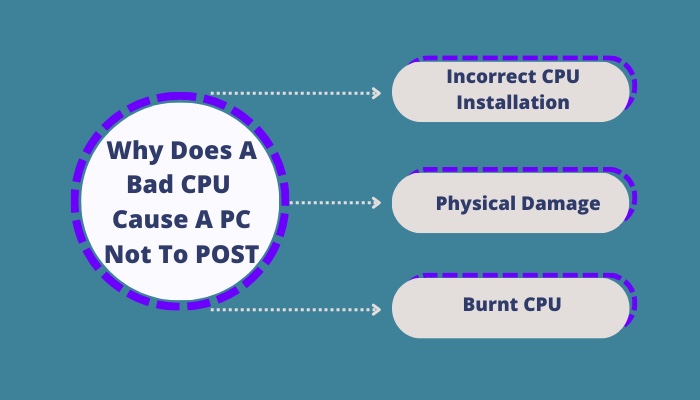
Here are the reasons behind a bad CPU which creates no POST issue:
Incorrect CPU Installation
A CPU consists of thousands of pins, which help to transfer the data between the motherboard and the processor. Usually, the processor fits and installs normally on the CPU socket with the guidance of cutouts.
But, if you mistakenly install it the wrong way or close the socket lever before fitting the CPU properly, the motherboard won’t receive any connection from the CPU.
As a result, the POST process will fail to detect the CPU during boot up and cause a no display.
Physical Damage
The processor is made with a chip and is very fragile. Any internal or external damage to the CPU can make the processor faulty.
If you harm the processor during the installation, the PC may not turn on. Also, a bent CPU pin is bad for the computer and can lead to the no POST issue.
Burnt CPU
Every processor has a temperature limit for each condition. Usually, a CPU can endure up to 90-95 °C for a while. Beyond that, the temperature is bad for your processor and has a higher possibility of burning the CPU.
Also, overheating issues can significantly decrease the CPU lifespan and break your CPU quickly.
The above reasons will help to identify your CPU problem, and you can overcome them by reading the following passage.
How to Overcome No POST Issue Due to a Bad CPU
To overcome the no POST process during start-up, and boot up the computer normally, you must install the processor correctly. Also, you’ve to improve the CPU cooling facility and may need to change or replace the processor if it becomes completely faulty.
Read the following procedures to prevent the no POST issue because of a bad CPU.
Here are the ways to overcome the no POST issue due to a bad processor:
1. Install CPU Correctly
Setting up the processor in the socket is easy, but you have to be careful when doing it. Check out all the cutouts and triangles to install the CPU correctly.
Make sure to pull down the socket lever properly and fit the processor well to the socket.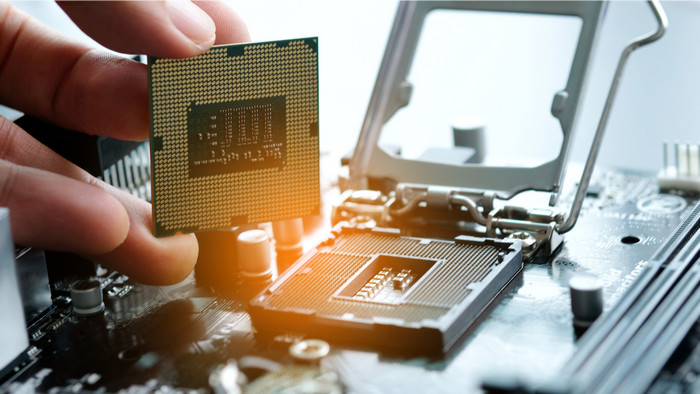
2. Improve the Cooling System
A sufficient cooling facility is a must to keep the CPU temperature down. Otherwise, a hot processor can give you a warning and hinder you from opening the computer.
Also, if the thermal paste on the CPU is worn out, you should clean and reapply the thermal paste to improve the cooling system.
3. Replace the Processor
When you damage the processor or burn out the CPU, there is nothing to do but replace the processor with a new one.
However, if the CPU has internal damage and is eligible for a warranty claim, you should do so now.
After following the above procedures, I believe you will be able to prevent the no POST issue and boot up your PC without any display or black screen issues.
Frequently Asked Questions
What does POST mean?
POST means Power-On-Sel-Test, which checks all the important PC components before booting up the device with OS.
Can a bad CPU cause no display?
Yes, a bad CPU can lead to a failed POST process and the inability to show any information on the display.
Will a PC POST with a bad CPU?
No, the PC won’t POST with a faulty CPU because the processor is necessary to complete the POST activity.
Conclusion
During the start-up, the computer has to go through the POST process every time. But, if you have a faulty or bad CPU, the process will fail and won’t let you boot.
In this article, I’ve explained the POST activity, how the bad CPU prevents the process and the necessary ways to overcome the difficulties.
I hope you’ve found this article beneficial, and get your PC up and running in no time.
Cheers!

